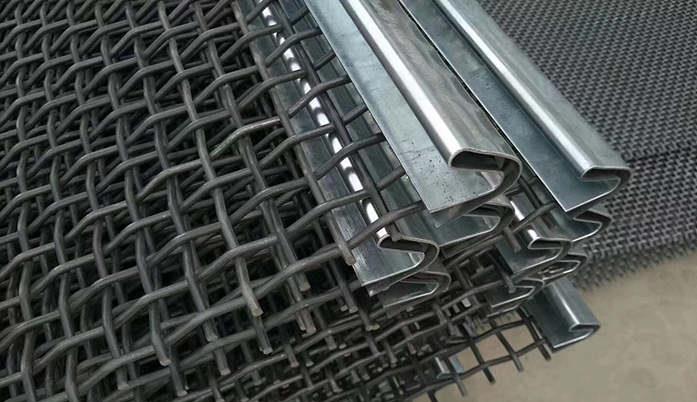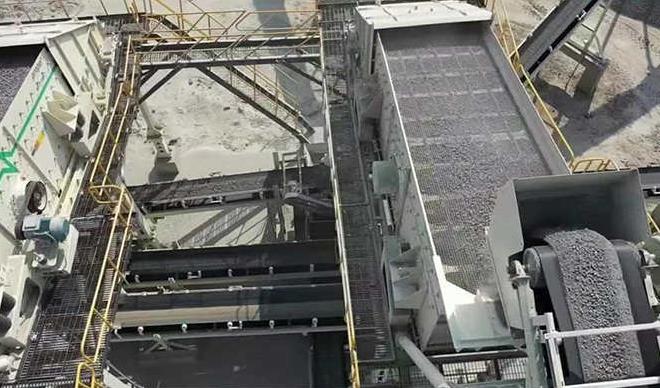Six factors related to the wear resistance of manganese steel screen
As a material widely used in mining, metallurgy, building materials and other industries, manganese steel screen mesh s wear resistance is a key factor that determines its service life and work efficiency
As a material widely used in mining, metallurgy, building materials and other industries, manganese steel screen mesh's wear resistance is a key factor that determines its service life and work efficiency. When discussing the wear resistance of manganese steel screens, we need to analyze it from multiple perspectives such as material composition, heat treatment process, and surface treatment technology.

1. The wear resistance of manganese steel screen is closely related to its chemical composition
Manganese (Mn) is an important element in improving the strength and hardness of steel. It can combine with the carbon (C) in the steel to form a hardened phase, thereby improving the wear resistance of the material. In addition to manganese and carbon, other alloying elements such as chromium (Cr), molybdenum (Mo), nickel (Ni), etc. are often added to manganese steel to further improve its mechanical properties and wear resistance.
2. The heat treatment process has a significant impact on the wear resistance of manganese steel screens.
Through appropriate heat treatment, such as quenching and tempering, the microstructure of manganese steel can be adjusted to achieve the best balance of hardness and toughness. Quenching is a process of heating steel to a certain temperature and then cooling it quickly, which can increase the hardness of the material; tempering is a heating and cooling process after quenching to eliminate internal stress, improve toughness, and prevent brittle fracture.
3. Surface treatment technology is also an effective means to improve the wear resistance of manganese steel screens.

Manganese steel screen is a type of high-strength manganese-resistant steel. It is mainly used to withstand harsh working conditions such as material impact, kneading, and material wear. The damage method is mainly wear and tear, and some will appear Cracking and deformation phenomena.
There are three types of manganese steel screen wear:
1. Friction and wear caused by contact and movement between the surfaces of metal components
2. Abrasive wear caused by impact of other metal or non-metal materials on the metal surface
3. Erosion and wear caused by contact between moving gas or liquid and metal.
For example, a hardened layer can be formed on the surface of manganese steel through shot peening or laser hardening. This hardened layer can effectively resist wear and extend the service life of the screen. In addition, coating technologies such as galvanizing and chromium plating can also improve the corrosion resistance and wear resistance of manganese steel screens to a certain extent.
4. The working conditions in actual applications will also affect the wear resistance of manganese steel screens.
The wear resistance of wear-resistant steel depends on the material itself, and wear-resistant steel shows different wear resistance under different working conditions. Both the material itself and the working conditions determine the wear resistance of the screen.
Characteristics of manganese steel screen, its product features:
1. Weaving fineness; mesh rules
2. Filtration accuracy is reliable
3. High compressive strength, high temperature resistance and chemical corrosion resistance
4. Good wear resistance
For example, factors such as the impact load endured by manganese steel screens during use, the type and particle size of abrasives, the temperature and humidity of the working environment, etc. will all affect its wear resistance. Therefore, when selecting manganese steel screens, it is necessary to select appropriate materials and processing techniques according to the specific application environment and requirements.
5. Selection of manganese steel screen
The selectivity of manganese steel screen mesh must first be selected based on the characteristics of the screen mesh.
1. Selectivity of the screen
Mainly based on the characteristics of the screen, material, wire diameter, mesh, length of life, and price. These elements of the screen interact with each other.
2. The thickness of the wire diameter directly affects the use time of the screen and the price quoted.
3. The wear resistance, corrosion resistance, high temperature resistance, and magnetic properties of the material will directly affect the price of the screen.
6. Classification of manganese steel screens
1. Densely woven square mesh galvanized iron wire, stainless steel wire, copper wire, aluminum wire, etc.
2. Features: dense structure, uniform mesh, good corrosion resistance, strong and durable.
3. Widely used in industry and construction, selecting sand, stainless steel wire, low carbon steel wire, nickel wire, copper wire, polyester wire, etc. for weaving: plain weave, twill weave, bamboo flower weaving, contrast weaving.
4. Characteristics: Good filtration accuracy and high load intensity of the contrast net.
5. Application scenarios: inevitable products for refining coal mines, iron mines, industry, and chemical materials.
In summary, the wear resistance of manganese steel screens is a complex issue, which involves many fields such as material science, heat treatment technology and surface engineering. Through comprehensive consideration and optimization of these factors, the wear resistance of manganese steel screens can be significantly improved to meet the needs of different industrial applications.



